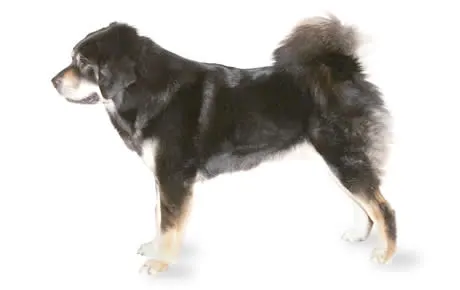This still-primitive Tibetan Mastiff dog breed was developed centuries ago in Tibet. Originally used as guard dogs for livestock and property, Tibetan Mastiffs can still be found performing that role, but they also enjoy life as family companions and show dogs.
Despite their massive, intimidating size, these pups are big softies when it comes to their human families. They retain their guardian nature, though, so strangers must beware, and introductions from trusted humans go a long way.
DogTime recommends this big, spacious crate to give your big Tibetan Mastiff a place to rest and relax. You should also pick up this dog water bottle for any outdoor adventures you have with your pup!
See below for a complete list of dog breed traits and facts about Tibetan Mastiffs!
Tibetan Mastiff Dog Breed Pictures
Adaptability
-
Adapts Well To Apartment Living
Looking for the best dog for your apartment? Contrary to popular belief, the suitability of dogs who adapt well to apartment living goes beyond its size. Apartment dwellers have a myriad of dog breeds to choose from as potential companions, with various factors to consider. Some large breeds can adapt well to apartment living and have lower activity levels. Others may require more space and possess higher energy levels. On the other hand, certain small dog breeds with abundant energy can still find contentment with indoor playtime or brisk walks.
However, when selecting a dog that adapts well apartments, it is essential to prioritize your neighbors. Opting for a pet that doesn’t excessively bark and behaves politely when encountering others in shared spaces like is crucial for maintaining a harmonious apartment environment.
In high-rise settings, it’s worth noting that numerous small dogs may exhibit a propensity for high energy and frequent barking. This makes them less suitable for apartment living. Therefore, desirable qualities in an apartment dog encompass being quiet, low-energy, and displaying polite behavior towards other residents.
Factors To Consider When Choosing A Dog For An Apartment
When considering dogs that adapt well to apartments, size alone should not be the sole determinant. Apartment dwellers have a wealth of dog breeds to choose from as potential furry companions. It’s important to remember that the size of your living space is just one factor to consider. While some larger breeds can adapt well to apartment living, with lower, others may require more space and have higher energy levels, making them less suitable for smaller apartments. Conversely, certain small dog breeds with higher energy levels can still thrive in apartments, finding contentment through indoor playtime or brisk walks. However, it is crucial to consider your neighbors’ comfort when selecting a dog. Opt for a pet that doesn’t bark excessively and behaves politely when interacting with others in shared spaces.
Therefore, it’s important to prioritize qualities such as being quiet, low-energy, calm indoors, and exhibiting good manners when living in close proximity to other residents. By considering these factors, you can find a dog that will adapt well to apartment living and create a harmonious living environment for everyone involved.
-
Good For Novice Owners
Some dogs are simply easier than others; they take to training better and are fairly easygoing. They’re also resilient enough to bounce back from your mistakes or inconsistencies.
Dogs who are highly sensitive, independent thinking, or assertive may be harder for a first-time dog parent to manage. You’ll get your best match if you take your dog-owning experience into account as you choose your new pooch.
If you’re new to dog parenting, take a look at 101 Dog Tricks and read up on how to train your dog!
-
Sensitivity Level
Some dogs will let a stern reprimand roll off their backs, while others take even a dirty look to heart. Low-sensitivity dogs, also called “easygoing,” “tolerant,” “resilient,” and even “thick-skinned,” can better handle a noisy, chaotic household, a louder or more assertive owner, and an inconsistent or variable routine. Do you have young kids, throw lots of dinner parties, play in a garage band, or lead a hectic life? Go with a low-sensitivity dog.
-
Tolerates Being Alone
Some breeds bond very closely with their family and are more prone to worry or even panic when left alone by their owner. An anxious dog can be very destructive–barking, whining, chewing, and otherwise causing mayhem. These breeds do best when a family member is home during the day or if you can take the dog to work.
-
Tolerates Cold Weather
Breeds with very short coats and little or no undercoat or body fat, such as Greyhounds, are vulnerable to the cold. Dogs with a low cold tolerance need to live inside in cool climates and should have a jacket or sweater for chilly walks. You can find a great jacket for your dog here!
-
Tolerates Hot Weather
Dogs with thick, double coats are more vulnerable to overheating. So are breeds with short noses, like Bulldogs or Pugs, since they can’t pant as well to cool themselves off. If you want a heat-sensitive breed, your dog will need to stay indoors with you on warm or humid days, and you’ll need to be extra cautious about exercising your dog in the heat.
All-around friendliness
-
Affectionate With Family
When it comes to unconditional love and unwavering loyalty, few animals can rival the affectionate nature of dogs. These remarkable creatures have earned their reputation as man’s best friend, and many breeds are particularly renowned for their love and devotion to their families. With their warm hearts and wagging tails, affectionate family dogs enrich the lives of their owners in countless ways.
One such breed known for its affectionate demeanor is the Golden Retriever. With their gentle temperament and friendly disposition, Golden Retrievers form deep bonds with their families. They eagerly participate in family activities, whether it’s a game of fetch in the yard or cuddling on the couch during a movie night. Their expressive eyes and ever-wagging tails are a testament to the joy they feel in the presence of their loved ones.
Another family-favorite breed is the Labrador Retriever. Renowned for their playful and patient nature, Labradors are excellent companions for children and adults alike. They readily engage in playtime with the kids, showcasing their boundless energy and enthusiasm. But when the day winds down, they seamlessly transition into loving and gentle cuddle buddies, comforting their family members with their warm presence.
Beyond specific breeds, mixed-breed dogs also have a special place in the hearts of families seeking affectionate companions. The shelter dogs, in particular, form deep connections with their adoptive families. They seem to understand the second chance they’ve been given and repay it with endless love and gratitude.
How To Know If A Dog Is Good With Families
The affectionate nature of family dogs extends beyond play and cuddles. Dogs have a remarkable ability to sense their owner’s emotions, offering comfort and support during difficult times. Whether it’s a wagging tail after a long day at work or a sympathetic nuzzle during moments of sadness, they prove time and again that they are attuned to their family’s needs.
It is important to note that not all dogs of the same breed will be equally affectionate. Some dogs may be more independent or aloof, while others may be more clingy or demanding of attention. The best way to find out how affectionate a dog is is to meet them in person and interact with them.
-
Kid-Friendly
Being gentle with children, sturdy enough to handle the heavy-handed pets and hugs they can dish out, and having a blasé attitude toward running, screaming children are all traits that make a kid-friendly dog. You may be surprised by who’s on that list: Fierce-looking Boxers are considered good with children, as are American Staffordshire Terriers (which are considered Pit Bulls). Small, delicate, and potentially snappy dogs such as Chihuahuas aren’t always so family-friendly.
**All dogs are individuals. Our ratings are generalizations, and they’re not a guarantee of how any breed or individual dog will behave. Dogs from any breed can be good with children based on their past experiences, training on how to get along with kids, and personality. No matter what the breed or breed type, all dogs have strong jaws, sharp pointy teeth, and may bite in stressful circumstances. Young children and dogs of any breed should always be supervised by an adult and never left alone together, period.
-
Dog Friendly
Friendliness toward dogs and friendliness toward humans are two completely different things. Some dogs may attack or try to dominate other dogs, even if they’re love-bugs with people; others would rather play than fight; and some will turn tail and run. Breed isn’t the only factor. Dogs who lived with their littermates and mother until at least six to eight weeks of age and who spent lots of time playing with other dogs during puppyhood, are more likely to have good canine social skills.
-
Friendly Toward Strangers
Stranger-friendly dogs will greet guests with wagging tails and nuzzles; others are shy, indifferent, or even aggressive. However, no matter what the breed, a dog who was socialized and exposed to lots of different types, ages, sizes, and shapes of people as a puppy will respond better to strangers as an adult. Remember that even friendly dogs should stay on a good, strong leash like this one in public!
Health And Grooming Needs
-
Amount Of Shedding
If you’re going to share your home with a dog, you’ll need to deal with some level of dog hair on your clothes and in your house. However, shedding does vary greatly among the breeds. Some dogs shed year-round, some “blow” seasonally, some do both, and some shed hardly at all. If you’re a neatnik, you’ll need to either pick a low-shedding breed or relax your standards. To help keep your home a little cleaner, you can find a great de-shedding tool here!
-
Drooling Potential
Drool-prone dogs may drape ropes of slobber on your arm and leave big, wet spots on your clothes when they come over to say hello. If you’ve got a laid-back attitude toward slobber, fine; but if you’re a neatnik, you may want to choose a dog who rates low in the drool department.
-
Easy To Groom
Some breeds are brush-and-go dogs; others require regular bathing, clipping, and other grooming just to stay clean and healthy. Consider whether you have the time and patience for a dog who needs a lot of grooming, or the money to pay someone else to do it.
-
General Health
Due to poor breeding practices, some breeds are prone to certain genetic health problems, such as hip dysplasia. This doesn’t mean that every dog of that breed will develop those diseases; it just means that they’re at an increased risk.
If you’re adopting a puppy, it’s a good idea to find out which genetic illnesses are common to the breed you’re interested in. You may also want to ask if your shelter or rescue has information about the physical health of your potential pup’s parents and other relatives.
-
Potential For Weight Gain
Some breeds have hearty appetites and tend to put on weight easily. As in humans, being overweight can cause health problems in dogs. If you pick a breed that’s prone to packing on pounds, you’ll need to limit treats, make sure they get enough exercise, and measure out their daily food servings into regular meals rather than leaving food out all the time.
Ask your vet about your dog’s diet and what they recommend for feeding your pooch to keep them at a healthy weight. Weight gain can lead to other health issues or worsen problems like arthritis.
-
Size
Get ready to meet the giants of the doggy world! Large dog breeds aren’t just big balls of fluff, they’re like loving, oversized teddy bears on a mission to steal your heart. Need some convincing? Let’s dive into the awesome benefits of owning one!
First things first, these pooches are a living security system! With their impressive size and thunderous barks, they’ll have any would-be intruder running for the hills. Talk about peace of mind! Plus, who needs an alarm when you’ve got a furry giant protecting your castle?
But that’s not all. Large dog breeds are all about loyalty and devotion. They’ll stick by your side through thick and thin, becoming your most dedicated bestie. Their love knows no bounds! When you have a giant fluffball showing you unconditional love, you’ll feel like the luckiest human on the planet.
Now, let’s talk about their talents. These big fellas are the ultimate working partners. With brains and brawn, they’re up for any challenge. From search and rescue missions to lending a helping paw to those in need, these dogs are superheroes in fur coats. They’ll make you proud every step of the way!
Don’t let their size fool you—these gentle giants have hearts as big as their paws. They’re incredible with kids and other pets, spreading their love like confetti. Their patience and kindness make them perfect family pets, ensuring harmony in your household.
Oh, and get ready to break a sweat! These dogs are fitness enthusiasts, and they’ll keep you on your toes. Daily walks, jogs, and play sessions will not only keep them happy and healthy but will also give you a reason to ditch the couch and join in on the fun. It’s a win-win situation!
So, if you’re ready for a dose of big love, go ahead and consider a large dog breed. They’re the best wing-dog you could ever ask for, ready to make your life a thousand times more exciting, loving, and downright awesome! Get ready for the big adventure of a lifetime!
Trainability
-
Easy To Train
Easy-to-train dogs are more adept at forming an association between a prompt (such as the word “sit”), an action (sitting), and a consequence (getting a treat) very quickly. Other dogs need more time, patience, and repetition during training.
Many breeds are intelligent but approach training with a “What’s in it for me?” attitude, in which case you’ll need to use rewards and games to teach them to want to comply with your requests.
Related:
10 Fun, Impressive Tricks You Can Teach Any Dog
-
Intelligence
Dogs who were bred for jobs that require decision making, intelligence, and concentration, such as herding livestock, need to exercise their brains, just as dogs who were bred to run all day need to exercise their bodies. If they don’t get the mental stimulation they need, they’ll make their own work–usually with projects you won’t like, such as digging and chewing. Obedience training and interactive dog toys are good ways to give a dog a brain workout, as are dog sports and careers, such as agility and search and rescue.
-
Potential For Mouthiness
Common in most breeds during puppyhood and in Retriever breeds at all ages, mouthiness means a tendency to nip, chew, and play-bite (a soft, fairly painless bite that doesn’t puncture the skin). Mouthy dogs are more likely to use their mouths to hold or “herd” their human family members, and they need training to learn that it’s fine to gnaw on chew toys, but not on people. Mouthy breeds tend to really enjoy a game of fetch, as well as a good chew on a toy that’s been stuffed with kibble and treats.
-
Prey Drive
Dogs with a high prey drive have an instinctive desire to stalk, capture, and prey upon potential food sources. Dogs who were bred to hunt, such as Terriers, have an inborn desire to chase — and sometimes kill — other animals. Anything whizzing by — such as cats, squirrels, and perhaps even cars — can trigger that instinct.
How to address a high prey drive
Off-leash adventures are too great a temptation for pups who will wander and hunt. Dogs who like to chase need to be leashed. And, even on a leash, you may experience your dog pulling on the leash to reach rodents or birds in their sight. Otherwise, these pups should be kept in a fenced area when outdoors. If your pup has a high prey drive, you’ll need a high, secure fence in your yard.
These breeds generally aren’t a good fit for homes with smaller pets that can look like prey, such as cats, hamsters, or small dogs. Breeds that were originally used for bird hunting, on the other hand, generally won’t chase, but you’ll probably have a hard time getting their attention when there are birds flying by.
Other behavioral concerns
Observing your dog’s prey drive, which is instinctual and biologically-rooted, is not the same as observing aggression. Much aggression is born of fear and anxiety, especially in the case of dog aggression toward humans.
The tendency to wander, even into oncoming traffic, can produce diasterious results for pups with predatory instincts. It can also lead to pups being bitten by snakes or attacked by other wild animals they may pursue while on the hunt.
-
Tendency To Bark Or Howl
Some breeds sound off more often than others. When choosing a breed, think about how often the dog vocalizes. Learn more about breeds with a tendency to bark or howl.
If you’re considering a hound, would you find their trademark howls musical or maddening? If you’re considering a watchdog, will a city full of suspicious “strangers” put your pup on permanent alert? Will the local wildlife literally drive your dog wild? Do you live in housing with noise restrictions? Do you have neighbors nearby? Then you may wish to choose a quieter dog.
-
Wanderlust Potential
Some breeds are more free-spirited than others. Nordic dogs such as Siberian Huskies were bred to range long distances, and given the chance, they’ll take off after anything that catches their interest. And many hounds simply must follow their noses–or that bunny that just ran across the path–even if it means leaving you behind.
Exercise needs
-
Energy Level
High-energy dogs are always ready and waiting for action. Originally bred to perform a canine job of some sort, such as retrieving game for hunters or herding livestock, they have the stamina to put in a full workday. They need a significant amount of exercise and mental stimulation, and they’re more likely to spend time jumping, playing, and investigating any new sights and smells.
Low-energy dogs are the canine equivalent of a couch potato, content to doze the day away. When picking a breed, consider your own activity level and lifestyle, and think about whether you’ll find a frisky, energetic dog invigorating or annoying.
-
Intensity
A vigorous dog may or may not have high energy, but everything they do, they do with vigor: they strain on the leash (until you train them not to), try to plow through obstacles, and even eats and drinks with great big gulps. These dynamos need lots of training to learn good manners, and may not be the best fit for a home with young kids or someone who’s elderly or frail. A low-vigor dog, on the other hand, has a more subdued approach to life.
-
Exercise Needs
Some breeds do fine with a slow evening stroll around the block. Others need daily, vigorous exercise, especially those that were originally bred for physically demanding jobs, like herding or hunting.
Without enough exercise, these breeds may put on weight and vent their pent-up energy in ways you don’t like, such as barking, chewing, and digging. Breeds that need a lot of exercise are good for outdoorsy, active people, or those interested in training their dog to compete in a high-energy dog sport, such as agility.
-
Potential For Playfulness
Some dogs are perpetual puppies — always begging for a game — while others are more serious and sedate. Although a playful pup sounds endearing, consider how many games of fetch or tag you want to play each day, and whether you have kids or other dogs who can stand in as playmates for the dog.
Tibetan Mastiff Overview
With his noble appearance, long coat, appealing colors, and beautiful tail, the Tibetan Mastiff is sure to be a conversation starter and traffic stopper as you walk him down the street. But if that’s all you’re looking for in a dog, this is not the breed for you.
Before considering the drawbacks, here’s what we love about this breed. The Tibetan Mastiff is loving, gentle, patient, and understanding. His centuries of working closely with humans have made him very sophisticated in the ways he understands people.
He’s a hard worker, protective of his family, fearless, and loyal. His large size and substance makes him a wonderful guard dog, and centuries of breeding for that specific task has perfected him as a protector.
As attractive as that sounds, it’s essential to weigh carefully the other qualities that can make him a challenging proposition.
This is an independent guardian breed who will not always look to you for guidance. He will enjoy your company and bond with you, but he won’t always obey you, especially in a situation in which he believes he’s right. The Tibetan Mastiff is stubborn and usually doesn’t do well in obedience or agility competitions.
Tibetan Mastiffs are generally quiet dogs when their needs and living conditions are met, but if left outdoors at night they can be barkers. Of course there’s an easy solution: bring your dog inside.
If you use a yard, make sure it’s well-fenced; Tibetan Mastiffs have been known to climb fences to escape. And be sure not to leave these dogs outside for very long because they may start to dig and become territorial and aggressive.
Under certain conditions, Tibetan Mastiffs are tolerant with children in their own families, especially if raised with them. But they’re generally not well suited to homes with young children. Tibetan Mastiffs can mistake the yelling, screaming, and playing of visiting children as a sign of aggression and often won’t allow your child’s friends to come visit.
This territorial drive can affect not only your children’s social life but also your own. If you are a social person with many people coming and going, this breed is probably not for you, as the Tibetan Mastiff may try to limit the number of people allowed into the house.
Socialization is essential for this breed. It’s important to take your Tibetan Mastiff puppy and adult dog to as many dog-friendly stores, parks, and events as possible. Let him meet new people, but understand if he’s wary of specific people.
Tibetan Mastiffs have a strong instinct concerning people, and if they don’t get over their initial dislike of a particular person, there’s usually a reason. Tibetan Mastiffs cannot be walked off leash and should be taken on several different routes during their daily walks to prevent them from becoming territorial of their walking route.
The Tibetan Mastiff can be a wonderful breed for the proper owner and home, but he can’t fit into just any lifestyle. If you’re interested in this breed, do your homework and talk to breeders and other Tibetan Mastiff owners.
One thing is certain: if you do acquire a Tibetan Mastiff, your life is sure to be an interesting adventure with this beautiful, loyal companion.
Tibetan Mastiff Highlights
- Be mindful the your small, cute teddy bear of a puppy will grow into a 75 to 160 pound dog. The Mastiff’s size makes him unsuited for apartment living.
- Tibetan Mastiffs are usually active in the morning and evening. If your schedule doesn’t allow you to exercise them during these times, this may not be the breed for you.
- They are generally calm indoors.
- The Tibetan Mastiff should not be left to live outside. He’s a companion dog and thrives in the presence of his family.
- Because of his protective nature, a Tibetan Mastiff should never be walked off leash. Vary his walks so he doesn’t become territorial over a specific route.
- Tibetan Mastiffs are highly intelligent, independent, and stubborn, yet sensitive to human moods. They will become upset if you yell at or discipline your children or argue with your spouse. They enjoy your company but are never fawning.
- This is not the breed for people who wish to compete in dog sports such as agility or obedience.
- Tibetan Mastiffs who are left outdoors at night will bark to let you know they’re on the job — so don’t leave them outdoors at night. On the upside, they are generally quiet during the day.
- Tibetan Mastiffs shed little, except for once a year. a They require weekly brushing, except during their seasonal shed, when they should be brushed more frequently.
- The Tibetan Mastiff needs early socialization that should continue throughout his life. Without it, he can be inappropriately aggressive toward dogs and people he doesn’t know. Socialization helps him learn discrimination, which is essential for a guardian breed.
- The Tibetan Mastiff is not recommended for a timid or first-time owner. This breed needs a confident trainer who is consistent and firm but also loving. The Tibetan Mastiff is strong-willed and will test whether you really mean what you say.
- Tibetan Mastiffs can become bored without proper physical and mental stimulation. This can lead to destructiveness, barking, and other negative behaviors. If you’re interested in owning a Tibetan Mastiff, please bear in mind that you’ll lose at least a few items to his sharp teeth before he reaches three years of age.
- Tibetan Mastiffs can do well with children if they’re raised with them, but they can mistake the yelling, screaming, and playing of children as a sign of aggression that requires action on their part. They may not warm up to neighborhood kids. They are not recommended for homes with young children.
- Never buy a Tibetan Mastiff from a puppy mill, a pet store, or a breeder who doesn’t provide health clearances or guarantees. Look for a reputable breeder who tests her breeding dogs to make sure they’re free of genetic diseases and of sound temperament.
Tibetan Mastiff History
The Tibetan Mastiff originated, where else, in Tibet. Like so many breeds, he has little documented history from before the late 19th century, but he’s believed to have been around for many centuries.
DNA evidence tells us that mastiff-type dogs originated in Tibet some 5,000 years ago, and the Tibetan Mastiff is no doubt a descendant of those dogs. They developed into two types: the Do-Khyi, who lived in villages or traveled with nomadic shepherds and functioned as flock guardians, and the larger Tsang-Khyi, which were often given to lamaseries, where they served as guardians for the Tibetan Buddhist monks, or lamas, who lived there.
Little is known of the Tibetan Mastiff before 1800. In 1800, a Captain Samuel Turner mentioned the use of “huge dogs” in his memoir, An account of an Embassy to the Court of the Teshoo Lama in Tibet, but he gave no description of them.
In 1847, the first dog from Tibet was imported to England and given to Queen Victoria as a gift from Lord Hardinge, the Viceroy of India. In 1873, England’s Kennel Club was formed and the Tibetan Mastiff was officially entered into the Stud Book as the Tibetan Mastiff, leaving its earlier title as “large dog from Tibet” behind.
In 1874, the Prince of Wales, who later became King Edward VII, imported two more Tibetan Mastiffs to England and they were shown in 1875 at the Alexandra Palace Show. Tibetan Mastiffs continued to be imported occasionally into England and Europe, and the first Tibetan Mastiff breed club was formed in 1931. World War II put an end to breeding, and it wasn’t until 1976 that English breeders began importing the dogs again.
The breed had a similar history in the United States. The late 1950s saw two Tibetan Mastiffs given to the President of the United States, but the dogs were taken to a farm and vanished from public scrutiny. It wasn’t until 1970 that several more Tibetan Mastiffs were imported into the United States and they became the foundation dogs of the United States line.
The Tibetan Mastiff Club of America was founded in 1974, as was the American Tibetan Mastiff Association. The first show that the Tibetan Mastiffs appeared in was the first National Specialty Match in October 1979.
The breed was only recently recognized by the American Kennel Club as a member of the Working Group in January 2007. Today, in Tibet, it’s difficult to find a purebred Tibetan Mastiff, but occasionally one can be found traveling with caravans and traders, and guarding livestock and homes.
Tibetan Mastiff Size
A male Tibetan Mastiff stands at least 26 inches tall at the shoulder and weighs in the vicinity of 100 to 160 or more pounds; females are at least 24 inches tall at the shoulder and weigh 75 to 125 or more pounds.
Tibetan Mastiff Personality
The word “challenging” is frequently applied to this independent, stubborn breed. He’s intelligent and has a strong sense of self, expecting to be treated as an equal, not as a pet.
He wants to please his people, but he also has his own agenda and must often be reminded of what he’s been asked to do. The Tibetan Mastiff is a loyal family guardian who takes his job seriously and is aloof or reserved toward strangers.
Early socialization that continues throughout his life will help prevent him from becoming territorially aggressive. Enrolling him in a puppy kindergarten class is a great start.
Inviting visitors over regularly, and taking him to busy parks, stores that allow dogs, and on leisurely strolls to meet neighbors will also help him polish his social skills.
Tibetan Mastiff Health
Tibetan Mastiffs are generally healthy, but like all breeds, they can be subject to certain health conditions. Not all TMs will get any or all of these diseases, but it’s important to be aware of them if you’re considering this breed.
- Canine Hip Dysplasia (CHD). This is a heritable condition in which the thighbone doesn’t fit snugly into the hip joint, eventually causing lameness or arthritis. X-ray screening for hip dysplasia is done by the Orthopedic Foundation for Animals or the University of Pennsylvania Hip Improvement Program (PennHIP). Dogs with hip dysplasia should not be bred. Hip dysplasia is hereditary, but it can be worsened by environmental factors, such as rapid growth from a high-calorie diet or injuries incurred from jumping or falling on slick floors.
- Elbow Dysplasia: This is a heritable condition common to large-breed dogs. It’s thought to be caused by different growth rates of the three bones that make up the dog’s elbow, causing joint laxity. This can lead to painful lameness. Depending on the severity of the problem, your vet may recommend surgery, weight management, or medication to control the pain.
- Panosteitis: Panosteitis can best be described as canine growing pains. It’s an inflammation of the long bones that affects young, large-breed dogs and causes lameness, which often shifts from leg to leg. The condition usually lasts from one to six months and eventually resolves with maturity. Any discomfort can be managed with pain medication.
- Osteochondrosis Dissecans (OCD): This orthopedic condition, caused by improper growth of cartilage in the joints, usually occurs in the shoulder, but may also affect the elbow. It causes a painful stiffening of the joint and can be detected in dogs as early as five to seven months of age. It may require surgical repair. Because it appears to be a hereditary condition, dogs with OCD should not be bred.
- Canine Inherited Demyelinative Neuropathy (CIDN): This is an inherited condition that is found in Tibetan Mastiff puppies by the time they are six weeks of age. The condition affects the nervous system and causes weakness in the rear legs that eventually progresses to complete paralysis. There is no treatment, but selective breeding has greatly reduced the incidence of CIDN.
- Autoimmune Hypothyroidism: This common endocrine disorder, which usually affects middle-aged and older dogs, is caused by a deficiency of thyroid hormone. Signs include weight gain, flaky skin, and lack of energy. Once diagnosed, hypothyroidism is easily managed with daily medication, which must continue throughout the dog’s life.
If you’re buying a puppy, find a good breeder who will show you health clearances for both your puppy’s parents. Health clearances prove that a dog’s been tested for and cleared of a particular condition.In Tibetan Mastiffs, you should expect to see health clearances from the Orthopedic Foundation for Animals for hips, elbows, and thyroid.
Because some health problems don’t appear until a dog reaches full maturity, health clearances aren’t issued to dogs younger than two years old. Look for a breeder who doesn’t breed her dogs until they’re two or three years old.
Tibetan Mastiff Care
The Tibetan Mastiff is a companion dog who should live indoors, with access to a large, securely fenced yard where he can exercise. A small yard or dog run isn’t sufficient for his needs.
His heavy coat makes him unsuited to life in a hot, humid climate, although he can tolerate dry heat. During hot weather, he should always have access to shade and fresh water whenever he’s outdoors.
The Tibetan Mastiff’s exercise requirements can be satisfied with 20 to 30 minutes of play in the yard or a half-hour walk. He’ll enjoy having another dog to play with, preferably one who comes close to his size.
Tibetan Mastiff puppies grow more quickly than smaller breeds, but they aren’t physically mature until they’re more than a year old. To prevent orthopedic damage, limit exercise to free play in the yard, and avoid long walks until your puppy is a year old.
Begin training the day you bring your Tibetan Mastiff puppy home. They are intelligent and learn quickly, but their independent and stubborn nature means that strict and formal obedience training doesn’t bring the best results.
Be patient, firm, and consistent to develop the strongest bond with your Tibetan Mastiff. Always look for behaviors you can reward instead of punishing him for infractions.
Regular training practice and social interaction will help ensure that you live together happily. A bored or lonely Tibetan Mastiff is more destructive and noisy than you can imagine.
Housetraining comes easily to the Tibetan Mastiff. Crate training assists in this process and prevents your puppy from chewing on things he shouldn’t or otherwise getting into trouble when you aren’t around to supervise. A crate also gives him a safe haven where he can retreat when he’s feeling overwhelmed or tired. A crate should never be used as a punishment.
Leash training is also important, especially since your Tibetan Mastiff will eventually weigh up to 160 pounds or more and be able to pull you where he wants to go. Tibetan Mastiffs should never be walked off leash and having good leash manners is essential to both the state of your muscles and your happiness.
Socialization is a must for this breed. Not only can Tibetan Mastiffs be overly dominant toward other dogs, they tend to become overly protective of their home and family. Puppy socialization classes are a great start, but socialization shouldn’t end there.
Visit many different dog-friendly stores, parks, and events. Invite different people to your home on multiple occasions so your Tibetan Mastiff learns that others can come onto your property and his territory.
With the proper training, consistency, and socialization, your Tibetan Mastiff can be a wonderful family member who guards, protects, and loves you unconditionally.
Tibetan Mastiff Feeding
Recommended daily amount: 4 to 6 or more cups of a high-quality dog food daily, divided into two meals. To avoid gastric dilatation volvulus, also known as bloat, withhold food and water for at least an hour after vigorous exercise.
How much your adult dog eats depends on his size, age, build, metabolism, and activity level. Dogs are individuals, just like people, and they don’t all need the same amount of food. It almost goes without saying that a highly active dog will need more than a couch potato dog.
The quality of dog food you buy also makes a difference — the better the dog food, the further it will go toward nourishing your dog and the less of it you’ll need to shake into your dog’s bowl.
Keep your Tibetan Mastiff in good shape by measuring his food and feeding him twice a day rather than leaving food out all the time. If you’re unsure whether he’s overweight, give him the eye test and the hands-on test.
First, look down at him. You should be able to see a waist. Then place your hands on his back, thumbs along the spine, with the fingers spread downward. You should be able to feel but not see his ribs without having to press hard. If you can’t, he needs less food and more exercise.
For more on feeding your Tibetan Mastiff, see our guidelines for buying the right food, feeding your puppy, and feeding your adult dog.
Tibetan Mastiff Coat Color And Grooming
The Tibetan Mastiff has a double coat with a long, thick, coarse-textured topcoat and a heavy, soft, woolly undercoat. The undercoat is thinner during warmer months. The hair is hard and straight, never curly, wavy, or silky.
A heavy mane covers the neck and shoulders, and the tail and britches (the upper thighs) have a heavy coat and feathering. Males generally have more coat than females, including a thicker mane around the neck and shoulders.
The coat comes in black, brown, gold, and blue, with or without tan markings above and around the eyes, on the side of the muzzle, on the throat, and on the lower part of the front forelegs, the inside of the rear legs, the breeches and the underside of the tail.
Some Tibetan Mastiffs have small white markings on the chest and feet but nowhere else on the body. The undercoat may be lighter shades of the dominant color or gray or tan on black and tan dogs. Tibetan Mastiffs with sable or brindle coats are faulted in the show ring, but their color doesn’t affect their ability to be a companion or guardian.
The Tibetan Mastiff sheds little and may or may not shed seasonally, depending on the climate in which he lives. Brush him one to three times a week with a wire slicker brush to remove dead or loose hair.
Be sure to check for tangles or mats in the mane, breeches, and tail, where the coat is heaviest. Bathe as needed. This breed has little odor, so he usually doesn’t require a bath more than once a month.
Other grooming needs include dental hygiene and nail care. Brush your Tibetan Mastiff’s teeth at least two or three times a week to remove tartar buildup and the accompanying bacteria. Daily is better.
Trim his nails once or twice a month, or as needed. If you can hear the nails clicking on the floor, they’re too long. Short nails keep the feet in good condition and don’t get caught in the carpet and tear. If the feet need to be tidied up with trimming, the best time to do it is when you are clipping the nails.
Check the ears weekly to make sure there’s no debris, redness, or inflammation. Clean the ears as needed with a cotton ball and a cleanser recommended by your dog’s breeder or your veterinarian. Wipe around the outer edge of the ear canal, and don’t stick the cotton ball any deeper than the first knuckle of your finger.
Begin getting your Tibetan Mastiff used to being brushed and examined when he’s a puppy. Handle his paws frequently — dogs are touchy about their feet — and look inside his mouth and ears.
Make grooming a positive experience filled with praise and rewards, and you’ll lay the groundwork for easy veterinary exams and other handling when he’s an adult.
Tibetan Mastiff Children And Other Pets
The Tibetan Mastiff is suitable for families with older children, but he can be too large to safely spend much time around toddlers. He would never mean to hurt them, but he could easily knock them over or step on them.
Make it a rule that children are never to run and scream in a Tibetan Mastiff’s presence. The noise and activity can excite him, and he’s simply too big to be allowed to chase children or play roughly with them.
He may also feel the need to protect “his” children from other kids, especially if they’re wrestling or otherwise appear to be fighting. Always supervise play so that he knows you’re in charge.
Always teach children how to approach and touch dogs, and always supervise any interactions between dogs and young children to prevent any biting or ear or tail pulling on the part of either party.
Teach your child never to approach any dog while he’s sleeping or eating or to try to take the dog’s food away. No dog should ever be left unsupervised with a child.
Tibetan Mastiffs get along well with other dogs and cats when they’re raised with them. As adults, they may require more of an adjustment period before they welcome the advent of another dog.
Tibetan Mastiff Rescue Groups
Consider adopting from a rescue group before going to a breeder. Here are a few breed-specific rescue groups.
Tibetan Mastiff Dog Breed Pictures
-
Tibetan Mastiff Dog Pictures
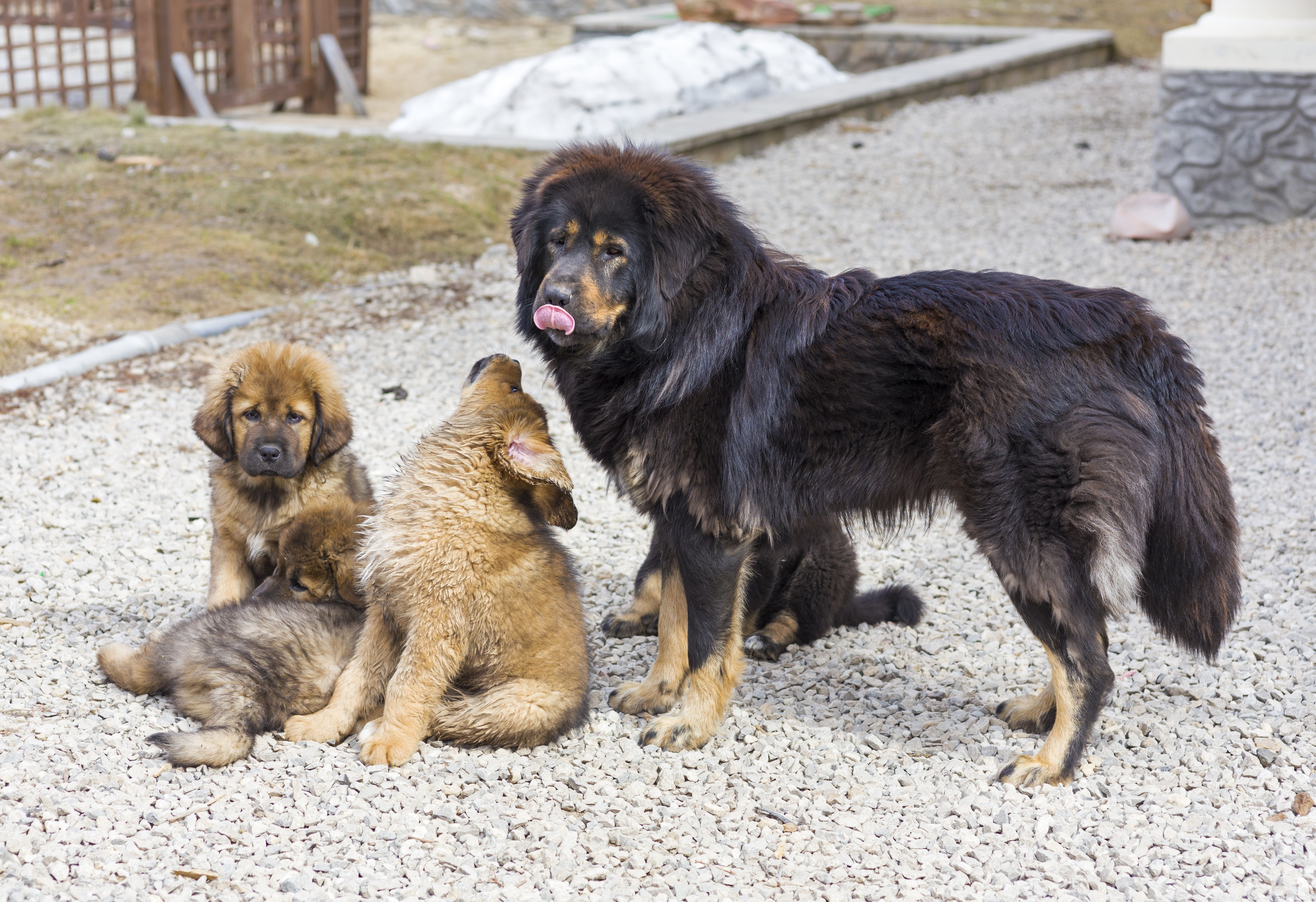
(Picture Credit: Getty Images)
-
Tibetan Mastiff Dog Pictures

(Picture Credit: Getty Images)
-
Tibetan Mastiff Puppy Pictures

(Picture Credit: Getty Images)
-
Tibetan Mastiff Dog Pictures
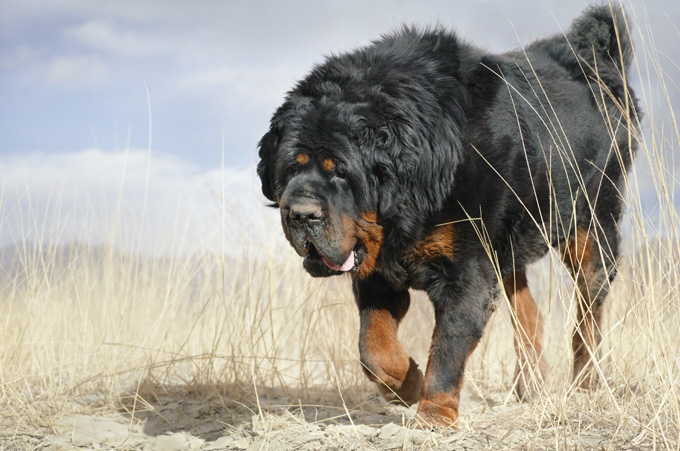
(Picture Credit: Getty Images)
-
Tibetan Mastiff Dog Pictures

(Picture Credit: Getty Images)
-
Tibetan Mastiff Puppy Pictures
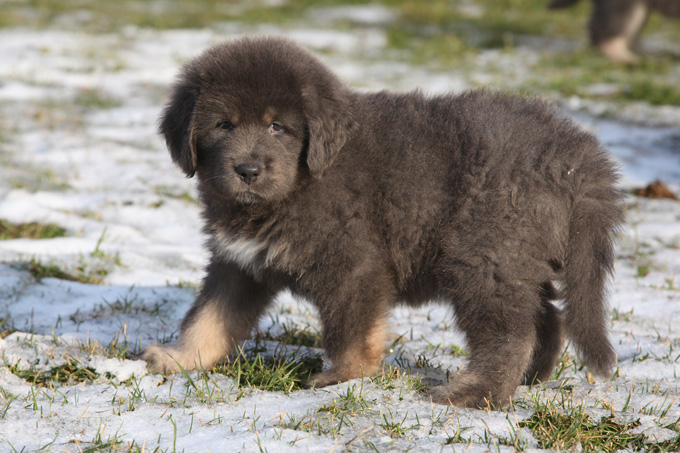
(Picture Credit: Getty Images)
-
Tibetan Mastiff Dog Pictures

(Picture Credit: Getty Images)
-
Tibetan Mastiff Dog Pictures
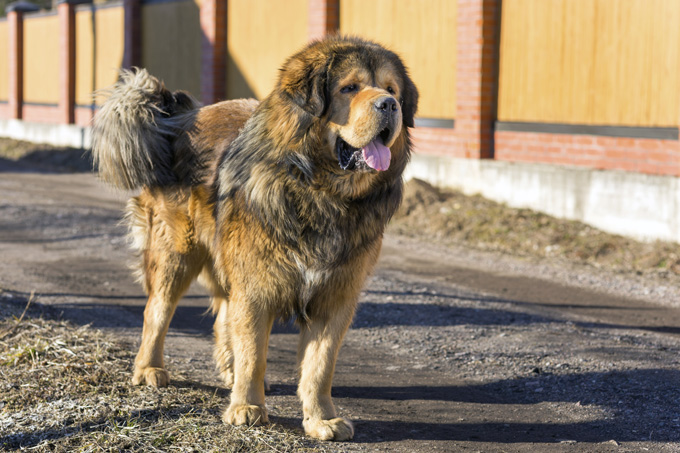
(Picture Credit: Getty Images)
-
Tibetan Mastiff Puppy Pictures
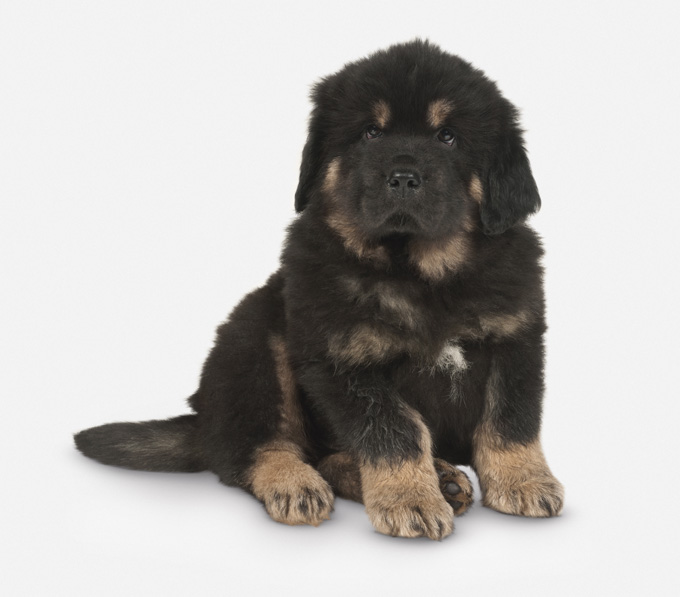
(Picture Credit: Getty Images)
-
Tibetan Mastiff Dog Pictures
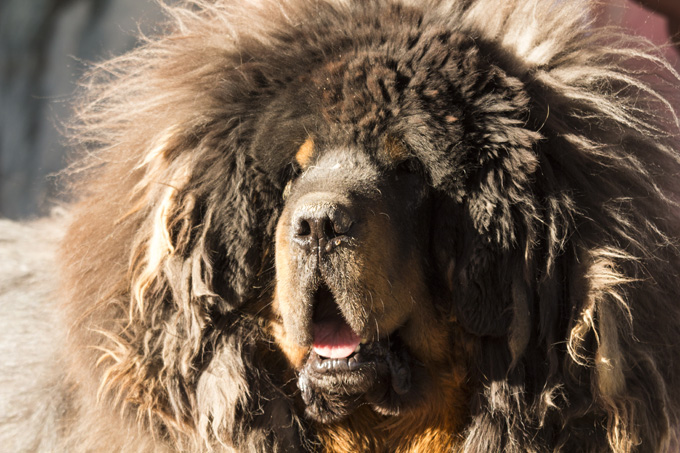
(Picture Credit: Getty Images)
-
Tibetan Mastiff Puppy Pictures
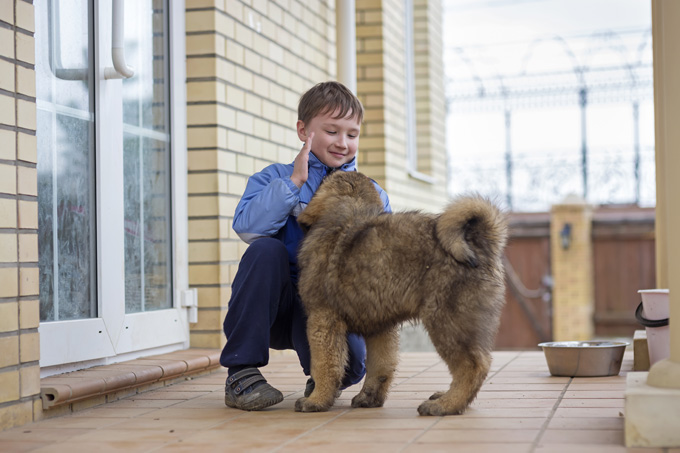
(Picture Credit: Getty Images)
